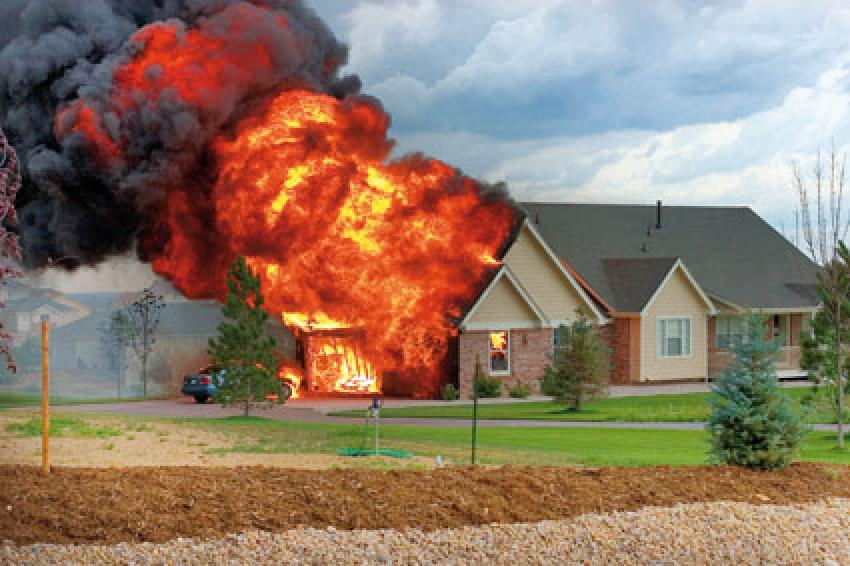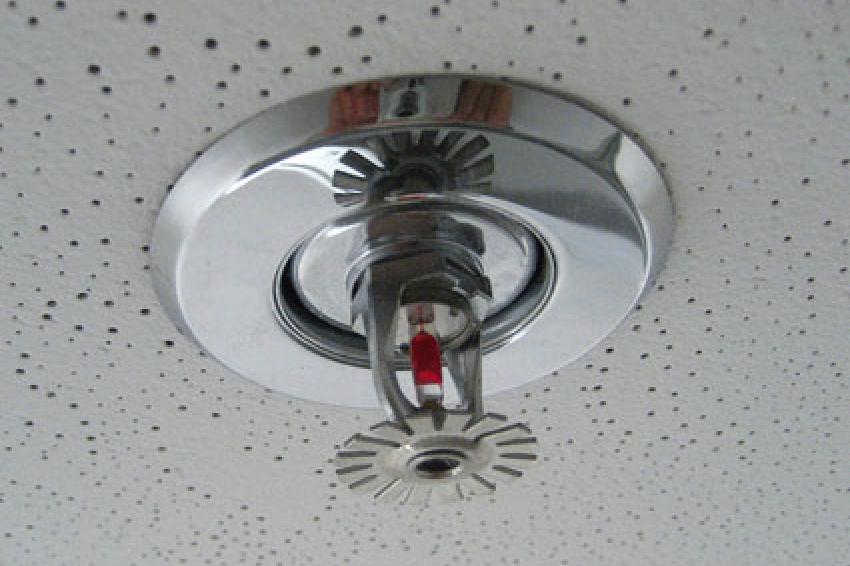Residential Fire Sprinklers
A View across the Ocean: How the U.S. Promote the Installation of Fire Sprinklers
The majority of fire deaths in the United States, about 85%, occur in the home - the place where we feel the safest. Adding to this tragedy is the astounding property loss. The total dollar loss from fire in homes each year in the USA is over $ 6 billion! Something most people never even think about is the devastating effect this fire problem has on the environment, from the huge amount of water spewed from fire hoses to extinguish house fires, to the energy used to rebuild, to the diesel fuel used in heavy fire suppression equipment, to the non-recyclable building materials going to landfills, to the carbon dioxide emissions filling the air.
The Solution
As a response to the growing fire problem in the U.S., the International Code Council (ICC) introduced an addition to the 2009 International Residential Code (IRC) which will mandate residential fire sprinklers in all new home construction beginning in 2011. The IRC is part of the International Building Code (IBC) that is widely adopted as law throughout the United States. This initiative could prevent more than 3,000 fire-related deaths and 60,000 serious fire-related injuries across the USA each year. In fact, the new sprinkler regulations are being endorsed by the U.S. Fire Administration (USFA), which is an entity of the U.S. Department of Homeland Security's Federal Emergency Management Agency (FEMA).
Other fire service professionals across the country back this endeavor, including the International Association of Fire Chiefs, the National Fallen Firefighters Foundation, and the International Association of Firefighters. Fire officials agree smoke detectors are no longer enough in residential fire protection, as lightweight construction has become more prevalent, house contents are more flammable than ever, and the time available to escape a house fire has reduced from 17 minutes 20 years ago to three minutes today.
The Question of Cost
The primary opposition to this mandate in the USA has been the National Association of Home Builders (NAHB), which views residential fire sprinkler requirements as unnecessary and too expensive for the benefits they provide. BUT, a study conducted for the National Fire Protection Association (NFPA) concluded that the presence of fire sprinkler ordinances has NO negative impact on the number of homes being built. Data for the analysis included annual single-family building permits, surveys of housing and households, local documents and news reports released before and after adoption of residential sprinkler requirements, as well as reviews of other housing regulations. Interviews with key builders, trade association staff and local government officials were also conducted.
The US housing crisis during 2006-2009 has nothing to do with the cost of fire sprinklers. The nation's housing crisis is directly related to mortgage availability or lack thereof. The cost of installing residential fire sprinklers in a new home is estimated at $1.61 per square foot, which is approximately 1% of the value of the home, according to the FEMA benefit-cost analysis on residential fire sprinklers. When the cost is spread over a 30-year mortgage, it comes down to less than the price of a cup of coffee per week. This is a small price to pay when it comes to saving lives.
Not All Home Builders Disagree
The fire service community commends those homebuilding companies that have embraced residential fire sprinklers, as they realize that safety comes first for the people who live in their homes. Furthermore, blocking the adoption of the code requirement for fire sprinklers in new homes creates a greater exposure to liability for the homebuilder. The homebuilder has an obligation to build a fire safe home regardless of what government does or does not mandate. Blocking local government from adopting fire safety standards for new homes simply deepens the liability hole for the homebuilder. The California Building Industry Association has taken a position of support, largely due to the potential construction defect lawsuit, a possible result if California had not adopted these requirements, which are now „national standard" (NFPA-5000, NFPA-101, and ICC-IRC) and someone were to have died in a fire in a newly constructed home which did not have residential fire sprinklers.
Myths and Facts
Myth: New homes are safer than older homes
Fact: Lightweight wood truss construction is being used more and more in home construction today because it offers builders savings in construction costs. Trussed roofs and floors commonly used in modern home construction are especially prone to collapse in a fire, putting firefighters and residents at extreme risk.
Myth: Sprinkler systems require a lot of maintenance
Fact: A properly installed fire sprinkler system typically requires little or no maintenance and/or expense on the part of the homeowner. Properly installed sprinkler systems require no more maintenance than other systems in the house, such as electrical or plumbing.
Myth: Smoke sets off fire sprinklers.
Fact: Fire sprinklers are activated by heat, not smoke. In fact, the heat necessary to set off your average fire sprinkler is anywhere from 150 to 165 degrees, in other words only the kind of heat a fire would create.
Myth: A fire sets off all the fire sprinklers.
Fact: Only the fire sprinkler closest to the fire, the one affected by the initial heat of the fire, will activate. In 81% of structure fires, only one or two fire sprinklers activated.
Myth: Fire sprinklers cause excessive water damage.
Fact: The average fire sprinkler only produces 55-95 liter of water per minute, versus 570-950 liter produced by a fire hose. In structures with fire sprinklers, the average property loss by fire is cut by one-half to two-thirds, and in some cases even more, than structures without. In most cases, structures without fire sprinklers are heavily or completely destroyed by the mix of fire and water damage caused by fire hoses.
Myth: Fire sprinklers are unsightly.
Fact: Modern advances in fire sprinkler technology have enabled architects, contractors and designers to install fire sprinklers into residential properties and businesses in ways that are atheistically pleasing. In fact, most people do not even notice that the building or room they are in is protected by fire sprinklers.
The Benefits of Fire Sprinklers
- Properly installed and maintained automatic fire sprinkler systems help save lives. Because fire sprinkler systems react so quickly, they can dramatically reduce the heat, flames, and smoke produced in a fire. Benefits include:
- Reduced risk of injury and fatality to civilians, EMS and fire service professionals
- Mortgage interest tax deduction
- Increased present value of resale proceeds
- Local tax savings
- Direct uninsured property loss averted
- Indirect uninsured costs averted
- Insurance premium credit
- Positive effect on the environment
Fire safety in the home should include a working smoke alarm, an escape plan and fire sprinklers. Fire sprinklers save lives and property!
National Fire Sprinkler Association (NFSA), Patterson N.Y., USA












